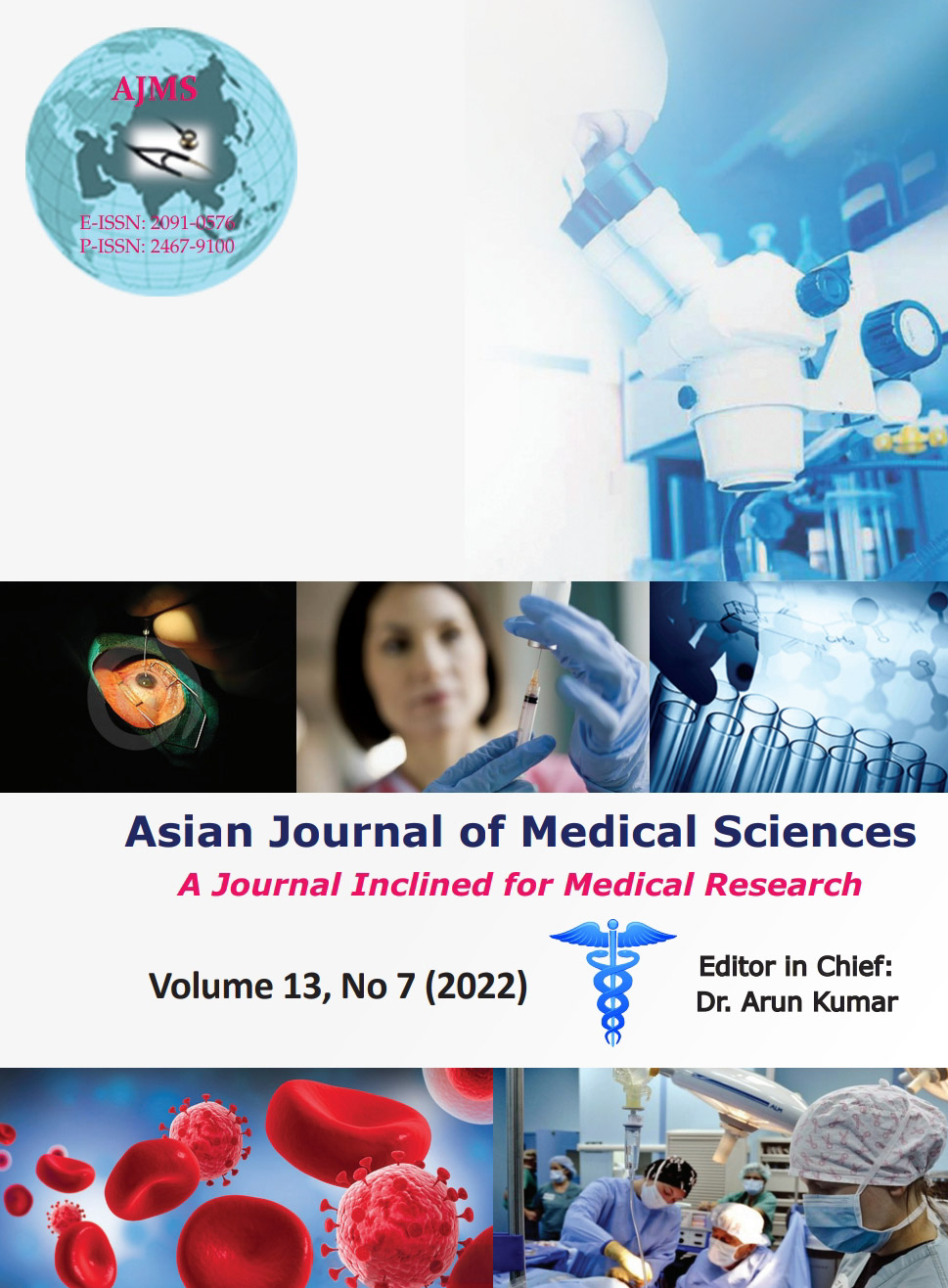Role of hematological parameters and biochemical markers as a predictor of severity of COVID-19 patients
Keywords:
COVID-19, D-dimer, Hematological parameters, ICU, Serum ferritinAbstract
Background: The etiological agent for pandemic COVID-19 is severe acute respiratory syndrome corona virus 2. Hematological and biochemical parameters are the indicators of inflammation and coagulopathy.
Aims and Objectives: The present study aimed to determine how effectively the hematological parameters and biochemical markers can help predict the severity of critically ill COVID-19 patients.
Materials and Methods: The current retrospective cohort study was conducted among 200 COVID-19 patients admitted in the Sanjay Gandhi Memorial Hospital, Rewa, Madhya Pradesh, India. In our lab’s computerized system, certain hematological and biochemical parameters of the patients were retrieved and recorded. Receiver operating characteristics (ROC) curve analysis was done to evaluate the diagnostic accuracy of hematological and biochemical parameters.
Results: Total leukocyte count (TLC), absolute lymphocyte count (ALC), neutrophil to lymphocyte ratio (NLR), D-dimer, and serum ferritin had a significant relationship with severity among ICU patients (P<0.05). ALC, D-dimer, and serum ferritin can be used to predict the severity of COVID patients with area under the ROC-AUC curve values of 0.717, 0.725, and 0.710, respectively. Platelet to lymphocyte ratio, lymphocyte to monocyte ratio, and C-reactive protein were not useful to predict the severity of COVID illness.
Conclusion: Hb concentration, TLC, NLR, D-dimer, and serum ferritin were significantly raised in critically ill COVID patients. ROC curve analysis showed that ALC, serum ferritin, and D-dimer were able to predict the severity of COVID illness effectively. Conclusively, these parameters can be used to track the prognosis of patients.
Downloads
Downloads
Published
How to Cite
Issue
Section
License
Copyright (c) 2022 Asian Journal of Medical Sciences

This work is licensed under a Creative Commons Attribution-NonCommercial 4.0 International License.
Authors who publish with this journal agree to the following terms:
- The journal holds copyright and publishes the work under a Creative Commons CC-BY-NC license that permits use, distribution and reprduction in any medium, provided the original work is properly cited and is not used for commercial purposes. The journal should be recognised as the original publisher of this work.
- Authors are able to enter into separate, additional contractual arrangements for the non-exclusive distribution of the journal's published version of the work (e.g., post it to an institutional repository or publish it in a book), with an acknowledgement of its initial publication in this journal.
- Authors are permitted and encouraged to post their work online (e.g., in institutional repositories or on their website) prior to and during the submission process, as it can lead to productive exchanges, as well as earlier and greater citation of published work (See The Effect of Open Access).




